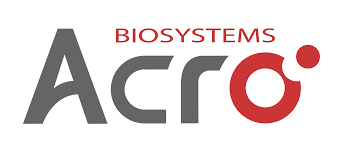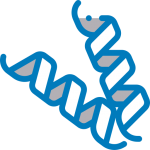
 Biotinylated Human VEGF165 Protein, His,Avitag™
Biotinylated Human VEGF165 Protein, His,Avitag™
VE5-H82Q0
200ug
Brand
ACROBiosystems
Description
Source :
Biotinylated Human VEGF165, His,Avitag (VE5-H82Q0) is expressed from human 293 cells (HEK293). It contains AA Ala 27 – Arg 191 (Accession # P15692-4).
Molecule : VEGF165
Synonyms : RP1-261G23.1,MGC70609,MVCD1,VEGFA,VPF
Format : Powder
Category : MABSol® Biotin Labeled Proteins
Accession : N/A
Storage : -20℃
Shipping condition : Powder,RT
Molecular Weight : 22.4 kDa (monomer)
Characteristics :
This protein carries a polyhistidine tag at the N-terminus, followed by an Avi tag (Avitag™). The protein has a calculated MW of 22.4 kDa (monomer). As a result of glycosylation, the protein migrates as 25-33 kDa (monomer) under reducing (R) condition, an
Endotoxin Level : Less than 1.0 EU per μg by the LAL method.
Buffer : PBS, pH7.4
Description :
VEGF165 is the most abundant splice variant of VEGF-A. VEGF165 is produced by a number of cells including endothelial cells, macrophages and T cells. VEGF165 is involved in angiogenesis, vascular endothelial cell survival, growth, migration and vascular permeability. VEGF gene expression is induced by hypoxia, inflammatory cytokines and oncogenes. VEGF165 binds to heparan sulfate and is retained on the cell surface and in the extracellular matrix. VEGF165 binds to the receptor tyrosine kinases, VEGFR1 and VEGFR2. VEGF165 is the only splice variant that binds to co-receptors NRP-1 and NRP-2 that function to enhance VEGFR2 signaling. Binding of VEGF165 to VEGFR1 and VEGFR2 leads to activation of the PI3K/AKT, p38 MAPK, FAK and paxillin. VEGF plays a key role in tumor angiogenesis in many cancers.
References :
(1) Takahashi, H. and Shibuya, M., 2005, Clin Sci (Lond) 109, 227-41.
(2) Neufeld, G. et al., 1999, FASEB J 13, 9-22.
(3) Robinson, C.J. and Stringer, S.E., 2001, J Cell Sci 114, 853-65.
Application
Reactivity



